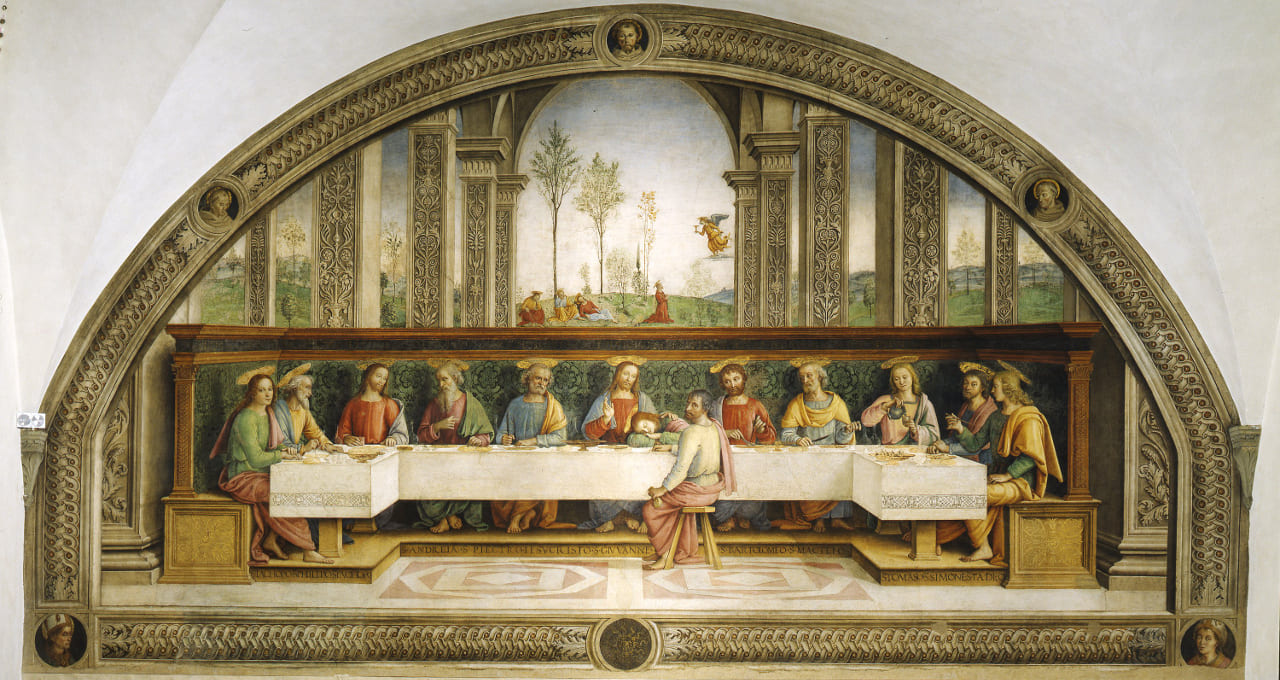
SURPRISING ITINERARIES: THE CENACLES OF FLORENCE
A walk to discover all the most important monasteries and cenacles in Florence.
Domenico Bigordi, known as Ghirlandaio, the great Florentine painter of the third generation of the Renaissance along with Verrocchio and Botticelli, left us two Cenacoli to admire! The first is the Cenacolo di Ognissanti (1480), located on the wall of the refectory of the small convent in the splendid Piazza Ognissanti overlooking the Arno.
In the complex of the church and monastery of San Salvatore in Ognissanti, founded by the Order of the Humiliated in the 12th century, on the back wall the large fresco creates a powerful illusionistic game, expanding the architecture of the room which is transformed into an open loggia. The study of the light that coincides with the real light of the room also contributes to this illusionistic effect. The artist, already active inside the church and not new to this kind of commissions, confirms here his happy descriptive streak, in drawing and colour, mixing the psychological representation of the apostles with realistic details such as the table, the food, the trees and birds, inspired by the traditional repertoire of symbols of the Passion and Resurrection.
The room also displays the sinopia (preparatory drawing) of the painting, detached after the restoration.
Openings 2025
In the month of January the All Saints' Last Supper will be open on Wednesday 8th and Wednesday 22nd from 9.30am to 12.30pm
In the month of February the All Saints' Last Supper will be open on Saturday 1st, Monday 3rd, Wednesday 5th, Saturday 8th, Saturday 15th, Monday 17th and Wednesday 19th from 9.30 to 12.30
In the month of March the All Saints' Last Supper will be open on Saturday 1st, Monday 3rd, Wednesday 5th, Saturday 8th, Saturday 15th, Monday 17th and Wednesday 19th from 9.30 to 12.30

Opening: from Tuesday to Saturday, 1st and 3rd Sunday of the month, 2nd and 4th Monday 8.30am-2.00pm (last entry 1.50pm) Closed on all other days, 1st January and 25th December.



Photo credits: https://museitoscana.cultura.gov.it






 All the services are provided by local merchants
All the services are provided by local merchants By using this site you support Florence
By using this site you support Florence We offer products with high-quality standards
We offer products with high-quality standards You stay sustainable
You stay sustainable It's a 100% trustworthy website
It's a 100% trustworthy website